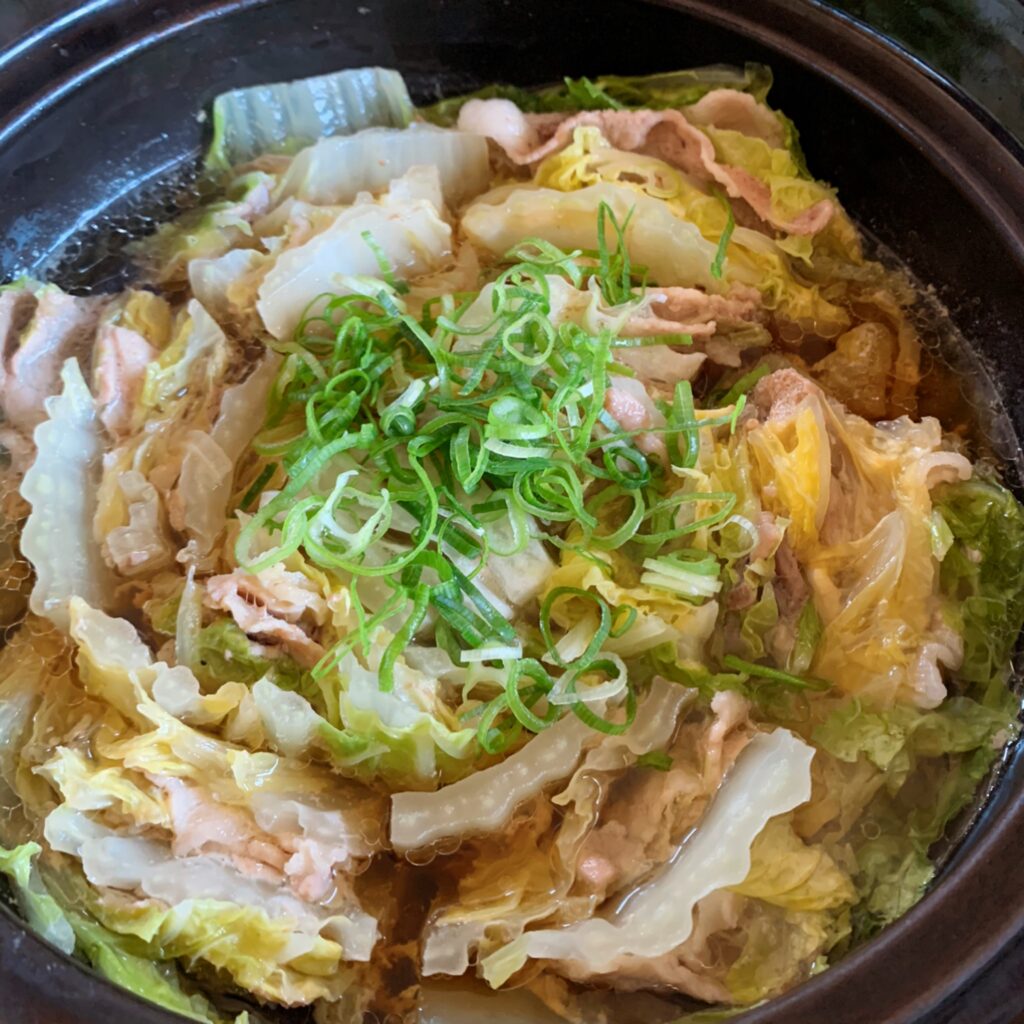
Hakusai no mille-feuille nabe(白菜のミルフィーユ鍋)
What kind of dish is Hakusai no mille-feuille nabe??
This is an easy-to-make Chinese cabbage mille-feuille nabe recipe.
Hakusai = Napa cabbage = Chinese cabbage Butabara = Pork belly
Hotpot is a typical winter home-cooking dish. Napa cabbage millefeuille hotpot is made by layering Napa cabbage and pork in an clay pot, pouring in dashi soup and simmering it.
The fat from the pork belly melts into the soup and soaks into the napa cabbage, making it very delicious.
It’s easy to make, full of vegetables, and great value for money.
Pork belly produces rich fat, so we recommend eating it with refreshing ponzu sauce.Ponzu is a sour sauce made by mixing soy sauce, vinegar, and citrus juice. Soy sauce and citrus fruits such as yuzu and kabosu go well together.
Once you have finished eating the ingredients, add the udon or rice.
Mixing carbohydrates into the remaining soup at the end of a hotpot meal is called “〆shime.” This is also exquisite.
If you don’t have a clay pot or you want to make a small amount of this dish, reduce the amount and use a glass cake mold. You can make it just by heating it in the microwave. This cooking method of layering ingredients and steaming them like this is called kasanemushi.
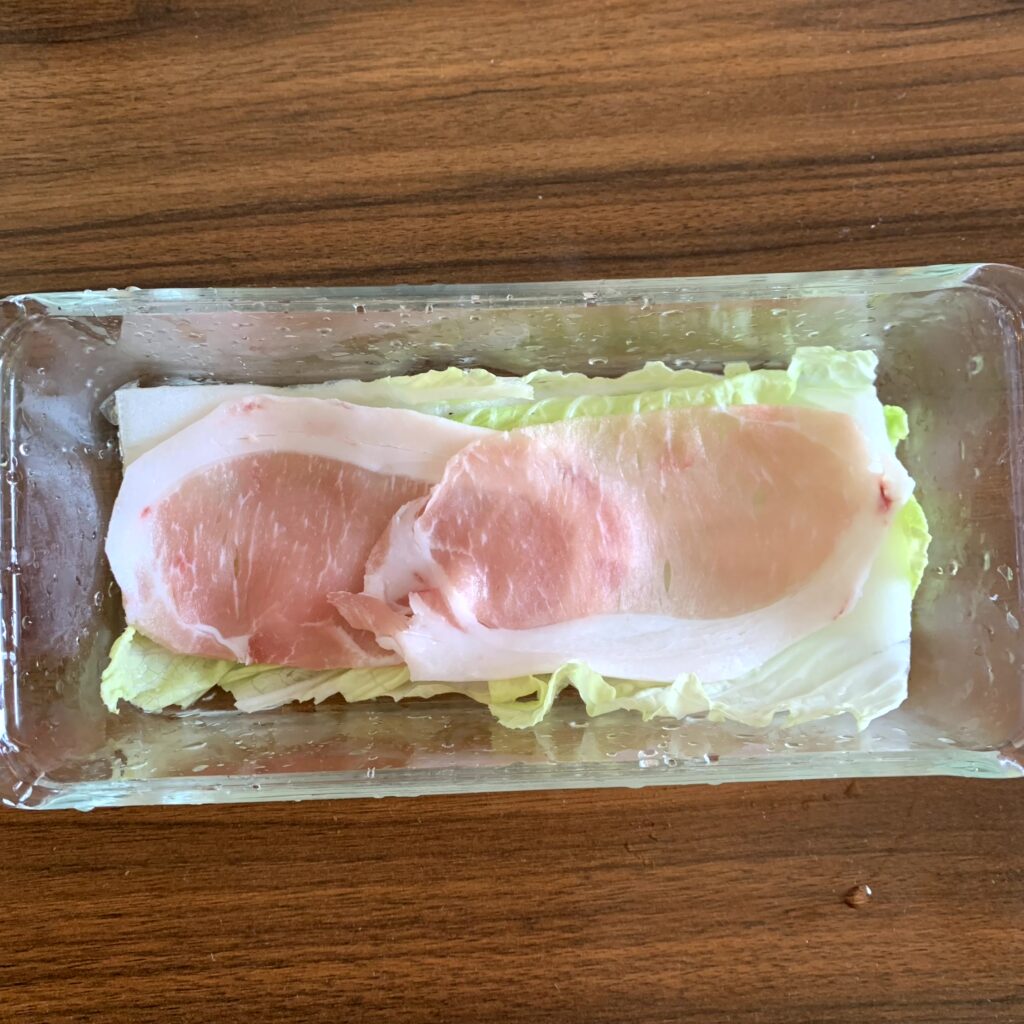
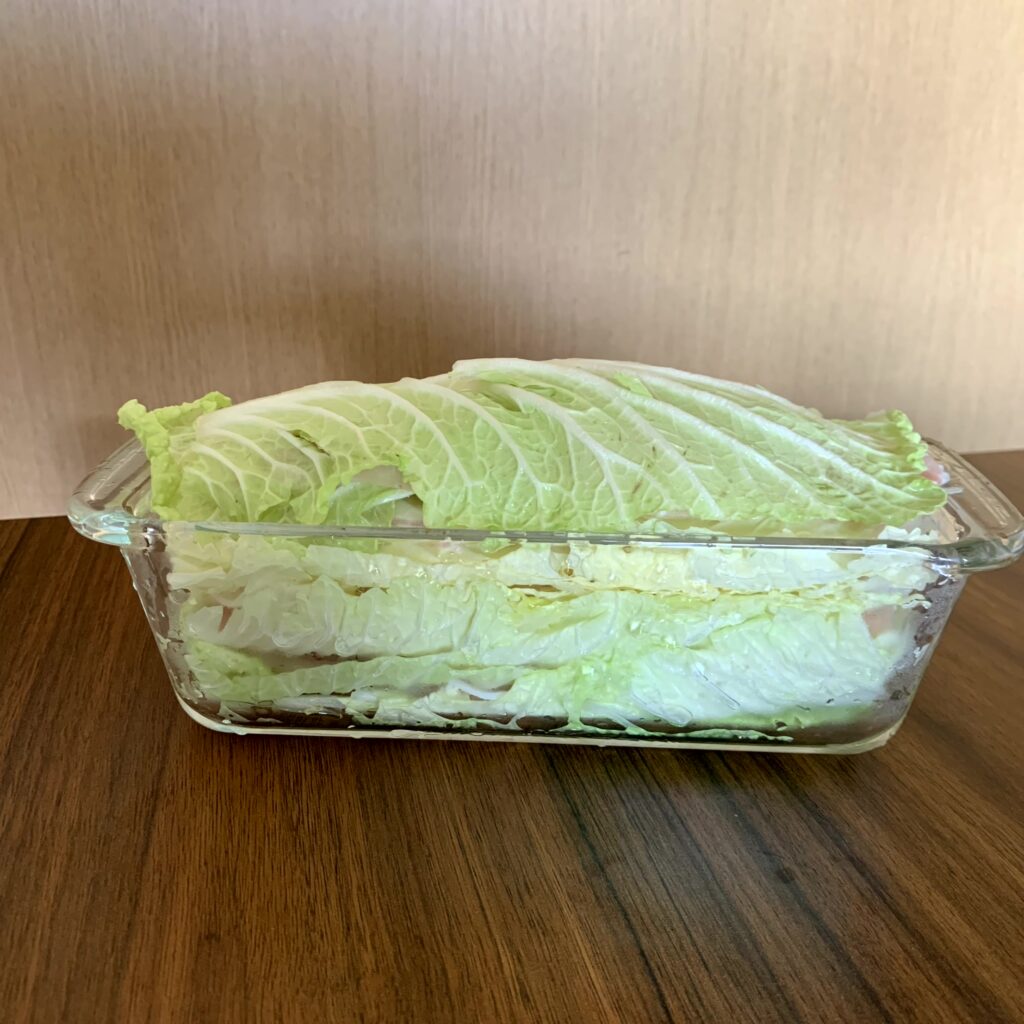
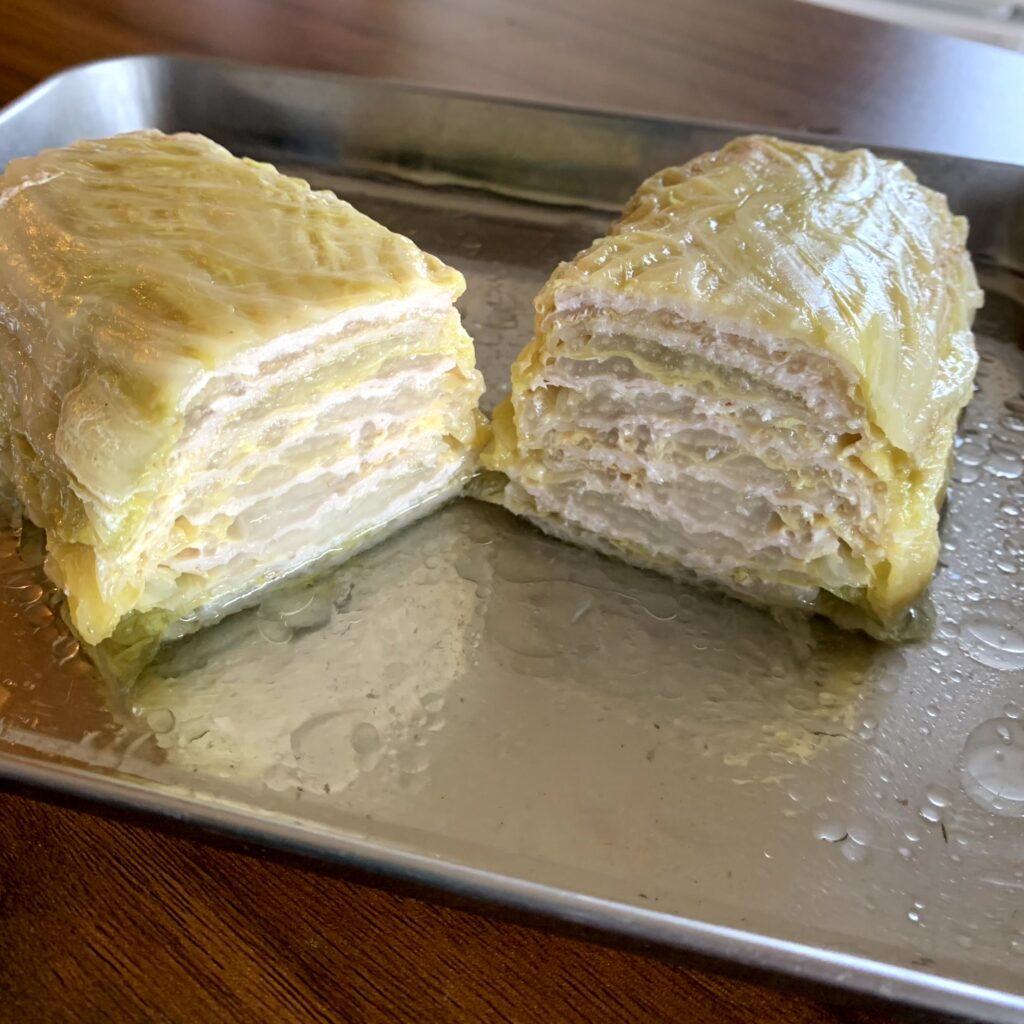
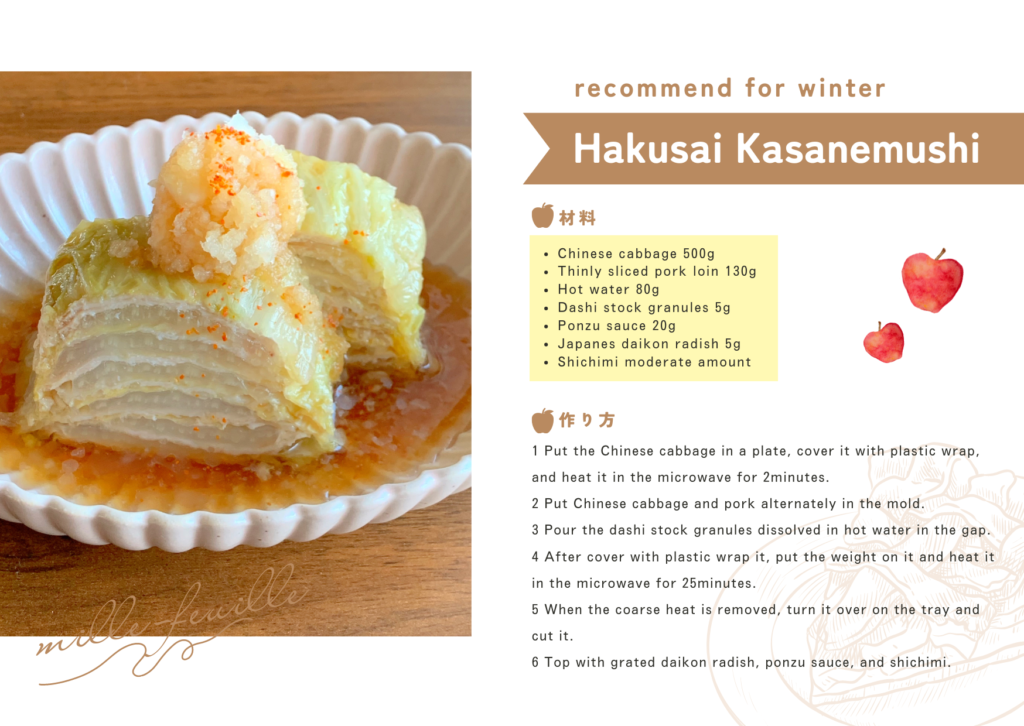
What kind of food is napa cabbage??
Napa cabbage (Chinese cabbage) is called “白菜 = hakusai” in Japan.
It is light green and cylindrical in shape. It has a lot of water, and the stems and leaves are soft and slightly sweet without bitterness.
Napa cabbage itself doesn’t have much of a distinctive taste, but it absorbs a lot of the flavor of the food it is cooked with, such as meat or fish, making it very delicious.
Napa cabbage originates from China. It spread in Japan in the Meiji period.
It used to be a typical winter vegetable, but now the demand is high throughout the year. When cooking, cut off a few centimeters from the base of the napa cabbage and wash it well.
The main cooking method is steaming or boiling, but it can also be used in salads and pickles, so it can be used for a wide variety of purposes.
NUTRITION FACTS : Pork Belly Napa Cabbage Mille-Feuille Nabe
Total Nutrition Value 1292 kcal Protein 47.4 g Fat 120.9 g Carb 19.2 g SaltEquivalent 5.2 g
INGREDIENTS for Pork Belly And Napa Cabbage Mille-Feuille Nabe Recipe ( 3SERVINGS )
- Napa cabbage (500g)
- Pork belly (300g)
- ☆Dashi stock granules (8g)
- ☆Soy sauce (12g)
- ☆Water (300g)
- Green (onions appropriate amount)
- Ponzu (appropriate amount)
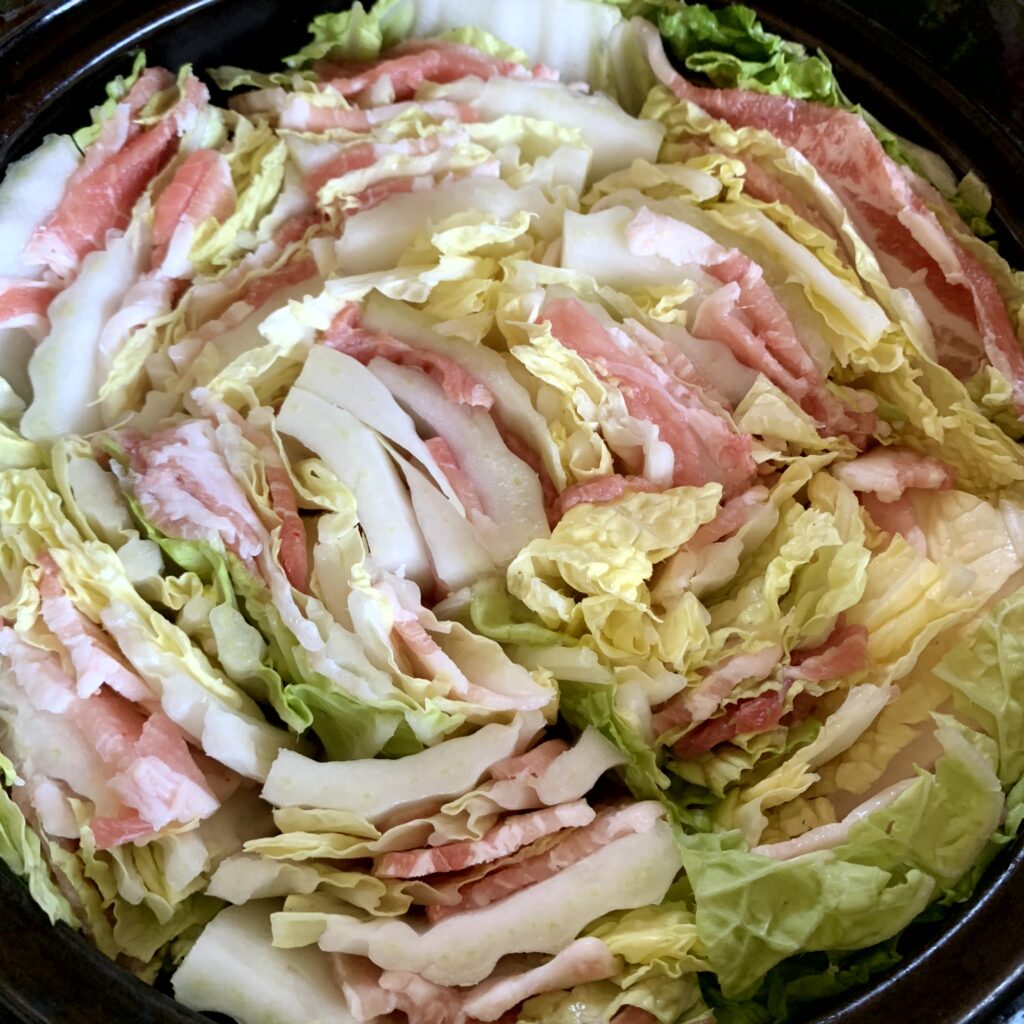
Pork Belly And Napa Cabbage Mille-Feuille Nabe Recipe INSTRUCTIONS
- Wash the napa cabbage to remove any dirt.
- Cut the cabbage into 8 equal parts. Do not cut off the bottom joint so the leaves do not fall apart.
- Place the pork belly between the cabbage leaves.
- Cut the napa cabbage into 3-5cm pieces and arrange in the pot. The bottom joint of the napa cabbage may be dirty so cut it off and discard it at this stage.
- Add the dashi stock granules, soy sauce and water and bring to a boil.
- Top with chopped green onions
- Serve with ponzu sauce.
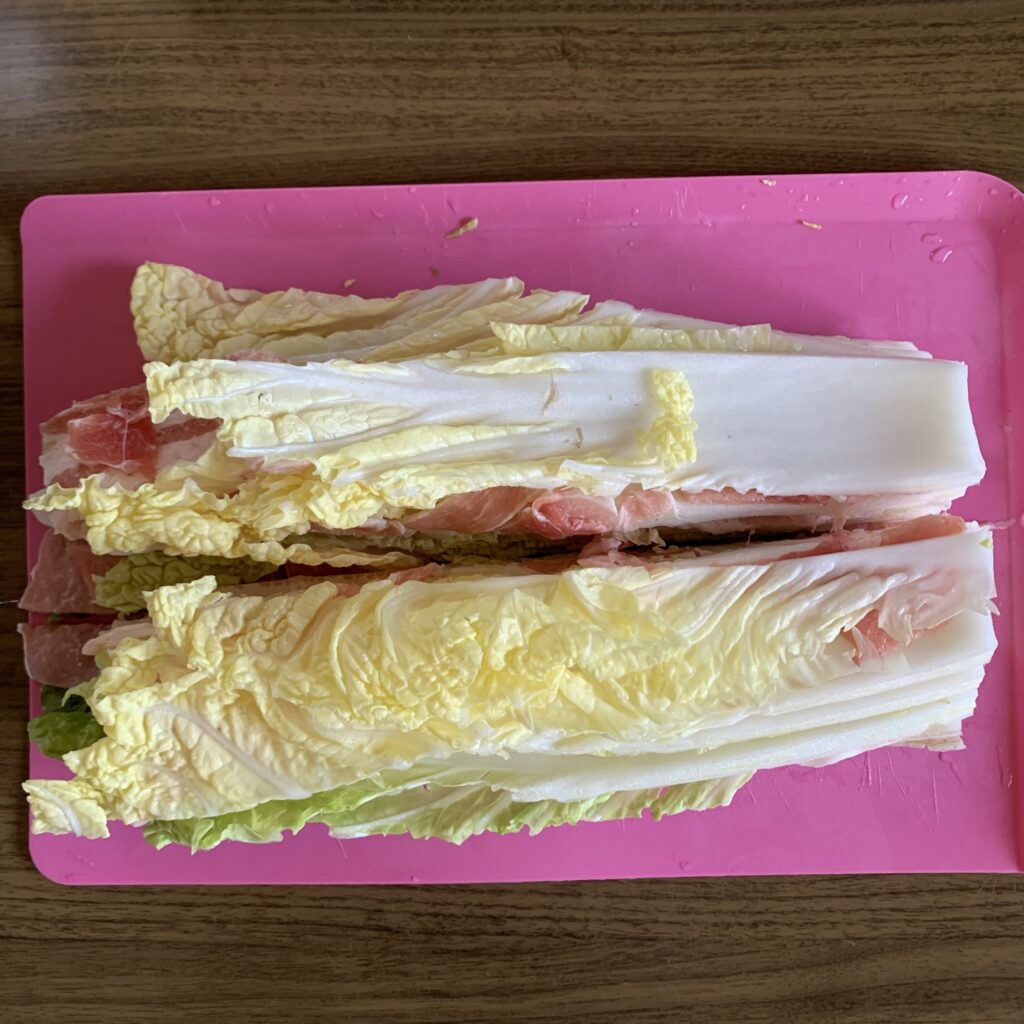
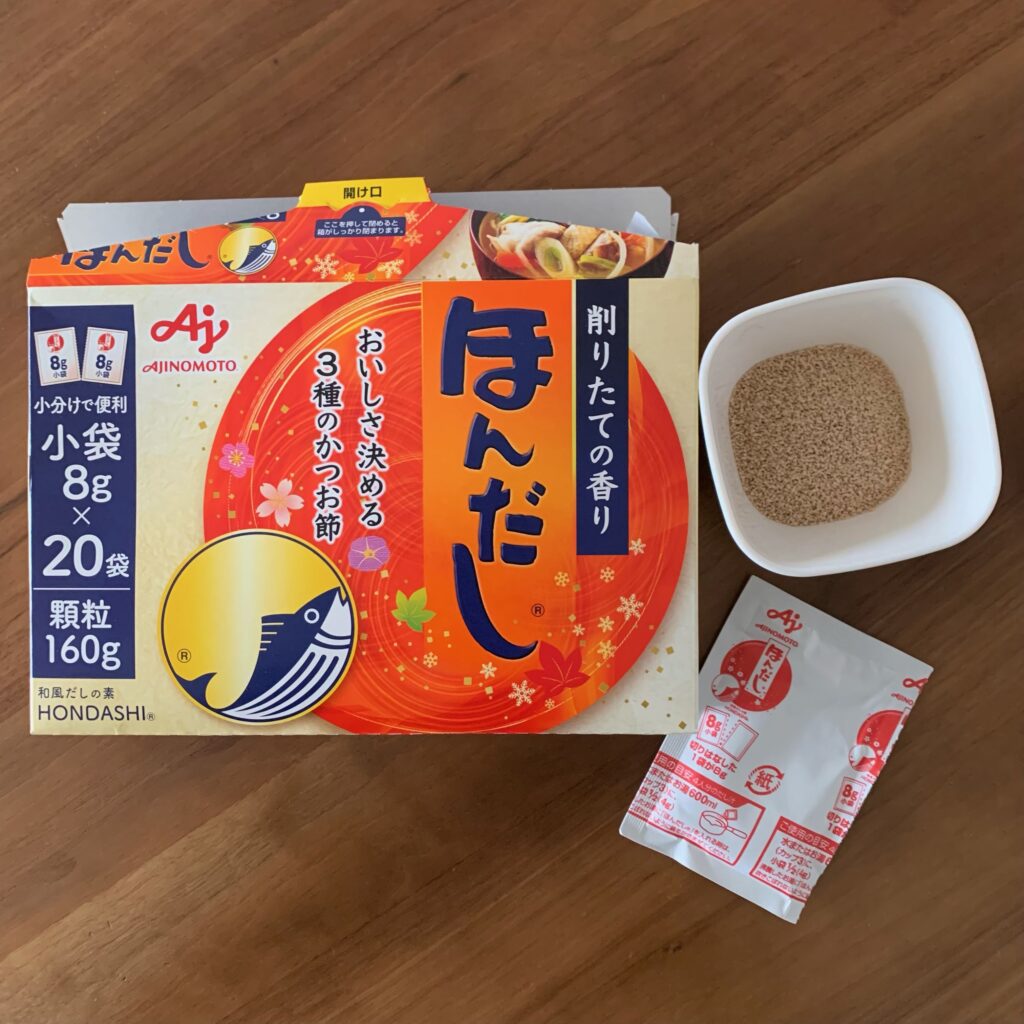
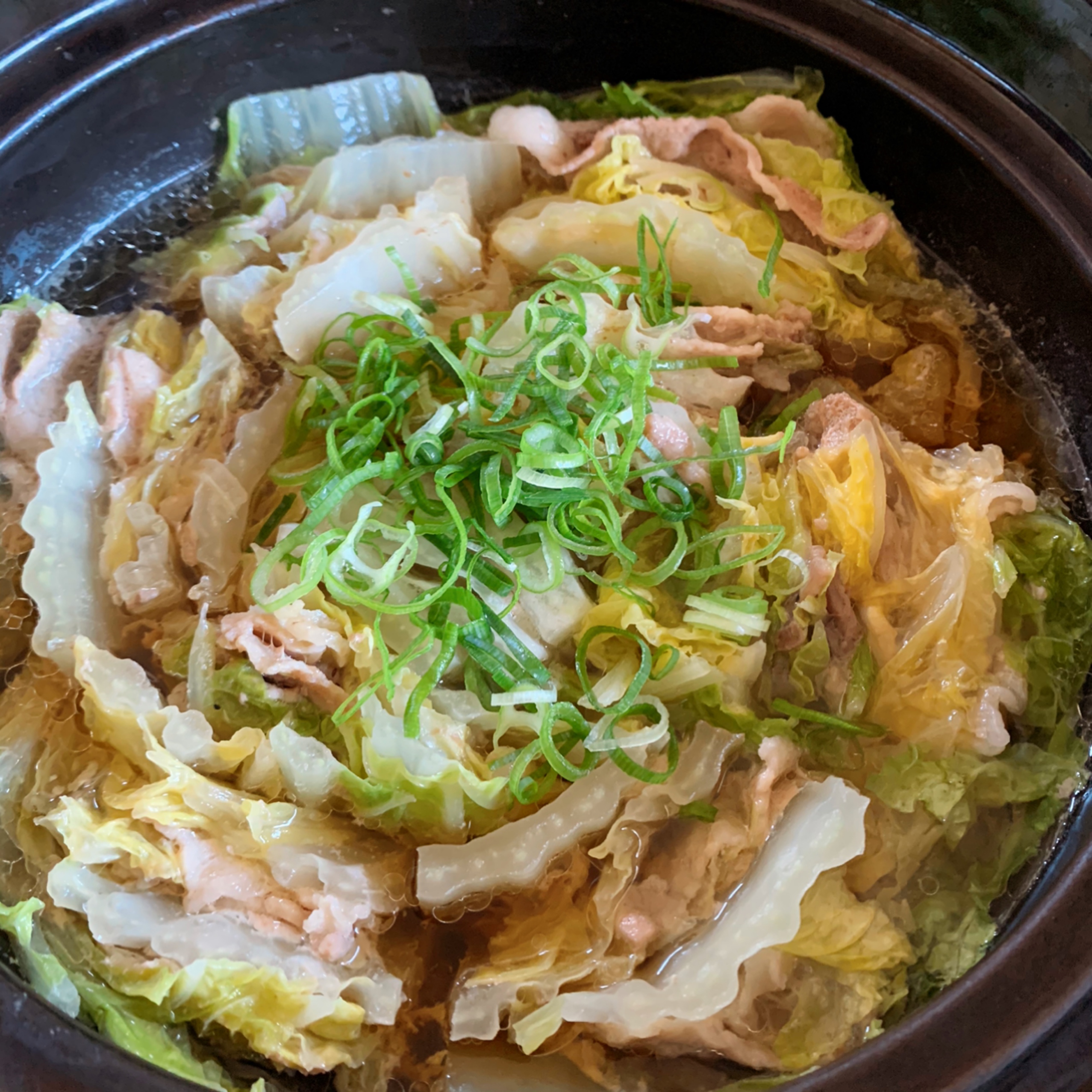


コメント